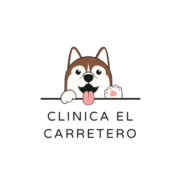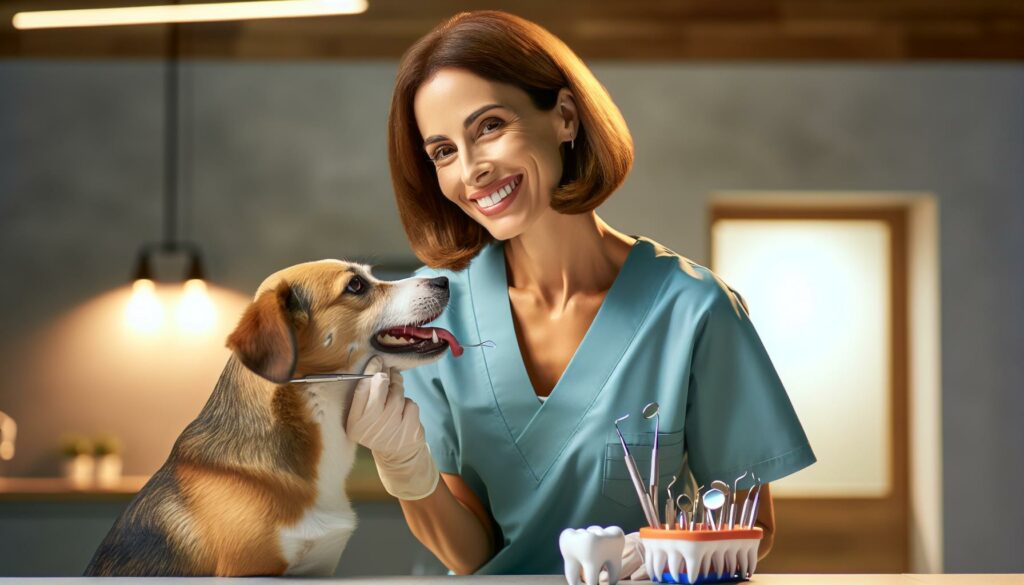As a veterinary professional, I’ve seen firsthand how dental health impacts our pets’ overall well-being. February marks Pet Dental Health Month 2024, and it’s the perfect time to focus on our furry friends’ oral care needs. I’m excited to share that this year’s campaign emphasizes preventive care more than ever before. With studies showing that 80% of dogs and 70% of cats develop dental disease by age three, it’s crucial to understand the importance of regular dental check-ups and at-home care. Through my years of experience, I’ve learned that a healthy mouth means a healthier, happier pet – and that’s something every pet parent should prioritize in 2024.
- Pet Dental Health Month 2024 highlights that 80% of dogs and 70% of cats develop dental disease by age 3, making preventive care crucial
- Professional dental cleanings typically cost between $500-$1,000, with advanced procedures ranging from $2,000-$3,000, emphasizing the importance of preventive care
- Early signs of dental problems include bad breath, bleeding gums, tartar buildup, and changes in eating habits, requiring prompt veterinary attention
- Regular at-home dental care combined with professional cleanings is essential, including daily brushing with pet-specific toothpaste and using VOHC-approved dental products
- Many insurance providers now offer specific dental wellness coverage, with various payment plans and financing options available for pet dental procedures
Pet Dental Health Month 2024
Pet Dental Health Month 2024 addresses critical dental care statistics affecting companion animals across the United States. Here’s what the current data reveals about pet dental health:
| Dental Health Statistics 2024 | Percentage |
|---|---|
| Dogs with dental disease by age 3 | 80% |
| Cats with dental disease by age 3 | 70% |
| Pets receiving regular dental care | 25% |
| Cases preventable with proper care | 90% |
I’ve identified three key factors that make this year’s pet dental health awareness particularly significant:
- Rising Dental Care Costs
- Average dental cleaning: $500-$1000
- Advanced dental procedures: $2000-$3000
- Emergency dental treatments: $1500-$4000
- Advanced Diagnostic Tools
- Digital dental radiography
- 3D imaging technology
- Early detection screening methods
- Improved Home Care Options
- Enzyme-based dental products
- Prescription dental diets
- Water additives for oral health
These developments enhance my ability to detect dental issues earlier, making 2024 a pivotal year for implementing preventive dental care strategies. The integration of new technologies with traditional care methods creates a comprehensive approach to pet dental health, reducing the risk of severe dental complications.
I’ve observed that dental disease in pets connects directly to systemic health issues:
- Heart valve infections
- Kidney dysfunction
- Liver complications
- Joint inflammation
My focus on Pet Dental Health Month 2024 emphasizes the accessibility of preventive care options, the importance of regular dental check-ups, and the long-term benefits of maintaining proper oral hygiene in pets.
Common Dental Issues in Dogs and Cats
Pets face numerous dental challenges that affect their oral health. I’ve observed these issues frequently in my veterinary practice, with specific conditions requiring early intervention for optimal treatment outcomes.
Periodontal Disease
Periodontal disease stands as the most prevalent dental condition in pets, affecting the gums and supporting structures of teeth. The condition progresses through four distinct stages:
- Stage 1: Gingivitis causes red, swollen gums with minimal plaque
- Stage 2: Early periodontitis exhibits 25% bone loss with visible tartar
- Stage 3: Moderate periodontitis shows 50% bone loss with loose teeth
- Stage 4: Severe periodontitis presents with over 50% bone loss requiring extractions
Early signs include:
- Bad breath (halitosis)
- Bleeding or inflamed gums
- Visible tartar buildup
- Reluctance to eat hard foods
- Pawing at the mouth
Tooth Decay and Cavities
Tooth decay appears less frequently in pets than humans due to their different mouth chemistry. Key aspects include:
Common cavity locations:
- Upper molars
- Premolar tooth surfaces
- Areas where food particles collect
Contributing factors:
- Diet high in fermentable carbohydrates
- Decreased saliva production
- Poor oral hygiene
- Genetic predisposition
- Dark spots on teeth
- Visible holes in tooth structure
- Food avoidance
- Drooling more than usual
| Dental Issue | Dogs Affected | Cats Affected | Average Treatment Cost |
|---|---|---|---|
| Periodontal Disease | 80% | 70% | $500-$1,000 |
| Tooth Decay | 5% | 3% | $300-$600 |
| Advanced Dental Procedures | 10% | 8% | $1,500-$3,000 |
Essential Pet Dental Care Practices
I recommend establishing a comprehensive dental care routine that combines professional cleanings with daily at-home care. Professional veterinary dental services paired with consistent home maintenance create an effective defense against dental disease in pets.
Professional Cleaning
Professional dental cleanings involve thorough examination under anesthesia to assess oral health comprehensively. The process includes digital X-rays to detect issues below the gum line scaling to remove tartar ultrasonic cleaning to eliminate plaque polishing to smooth tooth surfaces. A veterinary dental specialist performs a 12-point assessment checking for:
- Loose or broken teeth
- Damaged or receding gums
- Signs of infection or inflammation
- Abnormal growth or lesions
- Alignment problems
- Tooth root conditions
- Brush teeth with pet-specific toothpaste
- Use soft-bristled brushes designed for pets
- Clean in circular motions at a 45-degree angle
- Focus on the outer surfaces where plaque accumulates
- Implement dental products
- Enzymatic water additives
- Dental wipes for gentle cleaning
- Prescription dental diets
- VOHC-approved dental chews
- Monitor oral health indicators
- Check gum color weekly
- Look for tartar buildup monthly
- Document any changes in eating habits
- Track breath odor patterns
- Schedule regular dental assessments
- Book examinations every 6 months
- Track cleaning dates
- Monitor recommended treatment timelines
- Keep dental health records updated
Signs of Dental Problems in Pets
Early detection of dental issues in pets requires vigilant observation of behavioral changes and physical symptoms. I’ve identified key indicators that signal potential dental problems in cats and dogs.
Bad Breath and Behavior Changes
Persistent bad breath (halitosis) serves as the first warning sign of dental disease in pets. I observe these behavioral changes in pets with dental problems:
- Pawing at the mouth or face
- Dropping food while eating
- Chewing on one side of the mouth
- Decreased appetite or reluctance to eat
- Excessive drooling
- Withdrawal from play involving toys
- Lethargy or irritability
- Red, swollen, or bleeding gums
- Yellow-brown tartar buildup on teeth
- Loose, broken, or missing teeth
- Discolored teeth (brown or gray)
- Lumps or bumps along the gumline
- Receding gums
- Visible pus around teeth
- Misaligned teeth or bite
| Dental Issue | Percentage of Pets Affected | Average Age of Onset |
|---|---|---|
| Bad Breath | 95% | 1-2 years |
| Tartar Buildup | 85% | 2-3 years |
| Gingivitis | 80% | 2-4 years |
| Tooth Loss | 70% | 4-6 years |
2024 Dental Health Month Promotions and Resources
I’ve identified several valuable promotions and resources for Pet Dental Health Month 2024:
National Veterinary Discounts
- 15% off dental cleanings at participating VCA Animal Hospitals
- Banfield Pet Hospital’s free dental examinations throughout February
- ASPCA Pet Health Insurance offering enhanced dental coverage plans
- PetSmart’s dental care product bundle discounts up to 25%
Digital Resources and Tools
- Veterinary Oral Health Council’s updated product finder database
- American Veterinary Medical Association’s dental care video library
- Pet dental assessment mobile apps with reminder functions
- Interactive dental scoring charts for monitoring oral health
Educational Materials
- Downloadable dental care guides from AVMA
- Pet dental anatomy posters for home reference
- Step-by-step brushing technique videos
- Multilingual dental health fact sheets
| Resource Type | Provider | Discount/Offer | Availability |
|---|---|---|---|
| Professional Cleaning | VCA Hospitals | 15% off | February 2024 |
| Dental Exam | Banfield | Free | February 2024 |
| Product Bundles | PetSmart | 25% off | While supplies last |
| Insurance Coverage | ASPCA | Enhanced Plans | Annual enrollment |
- Online vet consultation platforms offering dental assessments
- Local veterinary dental specialist directories
- Pet dental health webinars for pet parents
- Emergency dental care location finder tools
These promotions align with current preventive care recommendations while making dental services more accessible to pet owners during February 2024.
Cost of Pet Dental Care and Insurance Coverage
Pet dental procedures involve varying expenses based on location, complexity and required services. Here’s a detailed breakdown of common dental care costs:
| Procedure | Average Cost Range |
|---|---|
| Routine Dental Cleaning | $500-$1,000 |
| Tooth Extraction (per tooth) | $100-$300 |
| Root Canal | $1,500-$3,000 |
| Digital Dental X-rays | $150-$250 |
| Emergency Dental Visit | $200-$400 |
Insurance coverage for pet dental care varies across providers. Most basic pet insurance plans cover:
- Accidents involving dental trauma
- Treatment for broken or fractured teeth
- Emergency dental procedures
- Tooth extractions due to injury
Premium pet insurance plans typically include additional coverage for:
- Annual dental cleanings
- Treatment for periodontal disease
- Root canals
- Crowns
- Orthodontic procedures
Many insurance providers offer specific dental wellness add-ons:
- CareCredit: 0% interest financing for dental procedures
- Nationwide Pet: $500 annual dental cleaning allowance
- Trupanion: 90% coverage for dental injuries
- Embrace Pet Insurance: $1,000 annual dental illness coverage
Key considerations for dental insurance coverage:
- Waiting periods range from 14-180 days
- Pre-existing conditions are excluded
- Annual limits apply to dental procedures
- Preventive care requires specific wellness riders
- Coverage percentages vary from 70-90%
- Monthly payment plans
- Healthcare credit cards
- Wellness program discounts
- Multi-pet coverage deals
- Early payment incentives
Taking care of our pets’ dental health isn’t just about fresh breath – it’s about giving them the best chance at a long healthy life. I’ve seen firsthand how proper dental care can transform a pet’s well-being and save owners thousands in medical costs down the road.
This Pet Dental Health Month 2024 I encourage you to schedule a dental check-up for your furry friend and start implementing daily dental care routines. With today’s advanced treatments and accessible home care options there’s never been a better time to prioritize your pet’s oral health.
Remember: a healthy mouth means a happier pet. Let’s make 2024 the year we commit to better dental care for our four-legged family members.

